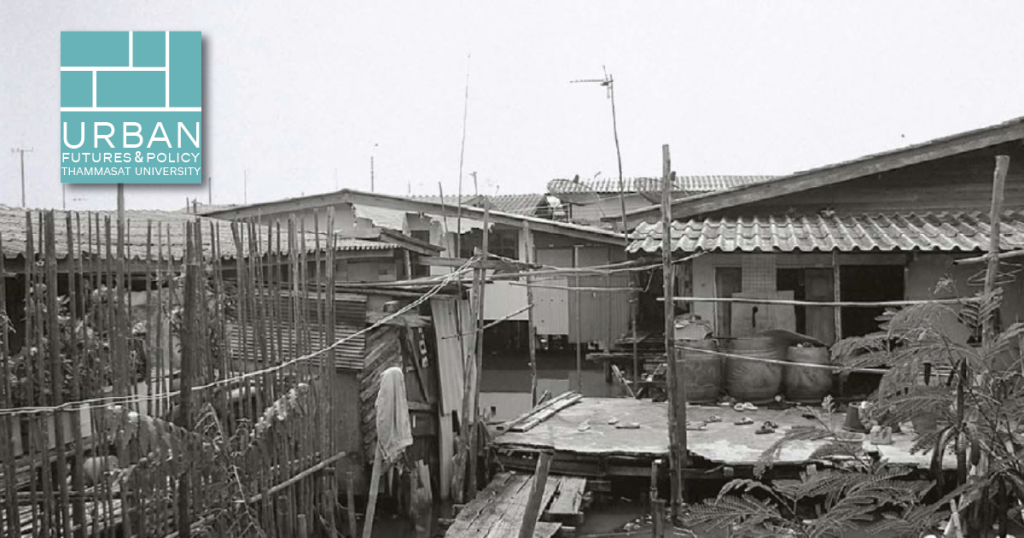Community Development
Community-based Livelihood Support for Urban Poor Project (SUP)
year 2014-2016
Share on facebook
Facebook
Share on google
Google+
Share on twitter
Twitter
Share on linkedin
LinkedIn
Share on whatsapp
WhatsApp

The Livelihood Support for the Urban Poor (SUP) project aims to achieve poverty alleviation goals by assisting the Royal Thai Government in providing financial assistance and improve living condition of poor communities in urban areas
The SUP project aims to revive local institutions for public participation in governance through the following objectives:
1. To improve the living conditions of low-income urban communities impacted by the flood.
2. To assist and revive urban poor communities affected by the flood.
3. To improve the living quality and basic infrastructure for communities.
4. To enhance the economic opportunities of low-income individuals.
The target communities are selected according to a selection criterion. The communities must not be participants of a similar program, or if they are participants of a program, the support must be considered insufficient. Additionally, they must fall within a particular level of poverty and a particular extent of flood damage threshold. The communities must also fulfill certain levels of readiness as follows:
1. The identification of the urban poor was derived through name lists within the urban poor network, was considered by CODI in 2008, as a starting step in the selection process of target communities.
2. The flood damage or data on the severity of the area flood impact that was used in the selection criteria was obtained from the council and urban poor network of the CODI.
3. Operational readiness of the communities is chosen according to:
2. The flood damage or data on the severity of the area flood impact that was used in the selection criteria was obtained from the council and urban poor network of the CODI.
3. Operational readiness of the communities is chosen according to:
1) located outside the drainage basin or proposed catchment area of other programs.
2) Have stability in terms of land ownership, such as having long-term rental contracts or renewable short-term contracts.
3) Has a community organization that can implement the program.
2) Have stability in terms of land ownership, such as having long-term rental contracts or renewable short-term contracts.
3) Has a community organization that can implement the program.
The target communities are selected according to a selection criterion. The communities must not be participants of a similar program, or if they are participants of a program, the support must be considered insufficient. Additionally, they must fall within a particular level of poverty and a particular extent of flood damage threshold. The communities must also fulfill certain levels of readiness as follows:
In addition, People’s participation in governance has been used within the selection criteria as well. The selection within this process is conducted through the cooperation of the Urban Poor Network, CODI. The agencies involved with the urban poor network proposed a list of urban poor communities which were affected by the 2011 flood. After that the CODI, together with provincial representatives from the Ministry of Social Development and Human Security, Department of Disaster Prevention and Mitigation, relevant local government representatives, and the urban poor network will deliberate and narrow the list down to approximately ten communities per province. The Governor was notified of meeting outcomes and the results of the selection criteria.
The final list was approved by the SUP steering committee. As of March 2016, the project covers 50 communities including approximately 27 cities. During the first cycle the total funding allocated was 60 million THB, and for the second cycle, 12 million THB was granted. Moreover, each province also received 2.5 million baht.
Project Monitoring and Evaluation (M&E) is part of the SUP project implementation. A qualitative impact evaluation was designed in 2014 to ensure that the SUP activities are well disseminated. This is essential to ensure that the lessons learned from this intervention can be used to address future shocks and improve government emergency response programs. The assignment comprises of a series of 2 assessments, baseline and endline, to be carried out in 3 treatment and 3 (comparable) control communities that did not receive project support. Particularly, this report is focused on an endline assessment and is organized as follows: Section 2 provides the purpose of the impact evaluation. Section 3 discusses the research methodology of the endline impact assessment. Also, CODI’s approach to the SUP project is introduced. Section 4 presents the results and the main findings from the qualitative and quantitative fieldwork. Section 5 discusses the analysis of the baseline and endline situation in the treatment and control community, and Section 6 concludes and provides recommendations.
Research Team
Asst.Prof. Wijitbusaba Marome
Faculty of Architecture and Planning, Thammasat University
Assistant Prof. Nattawut Usavagovitwong,
Faculty of Architecture, Sripatum University
Asst.Prof. Boonanan Natakun
Faculty of Architecture and Planning, Thammasat University
